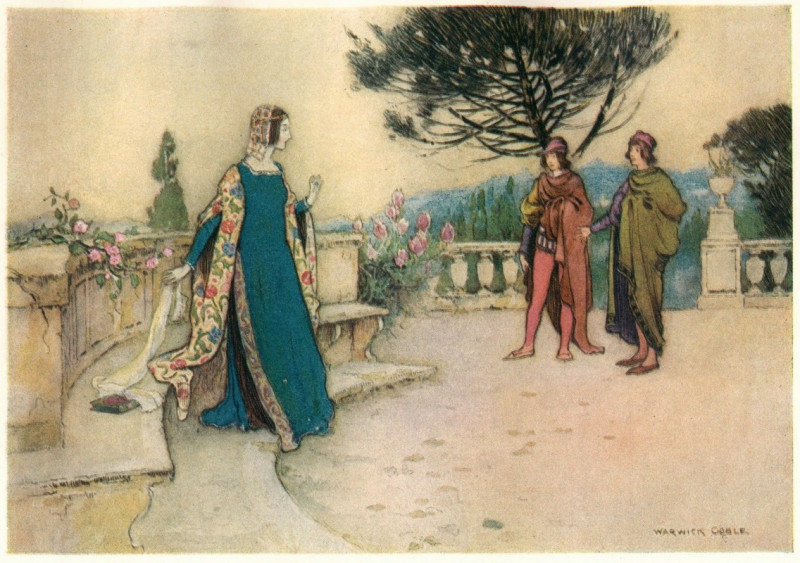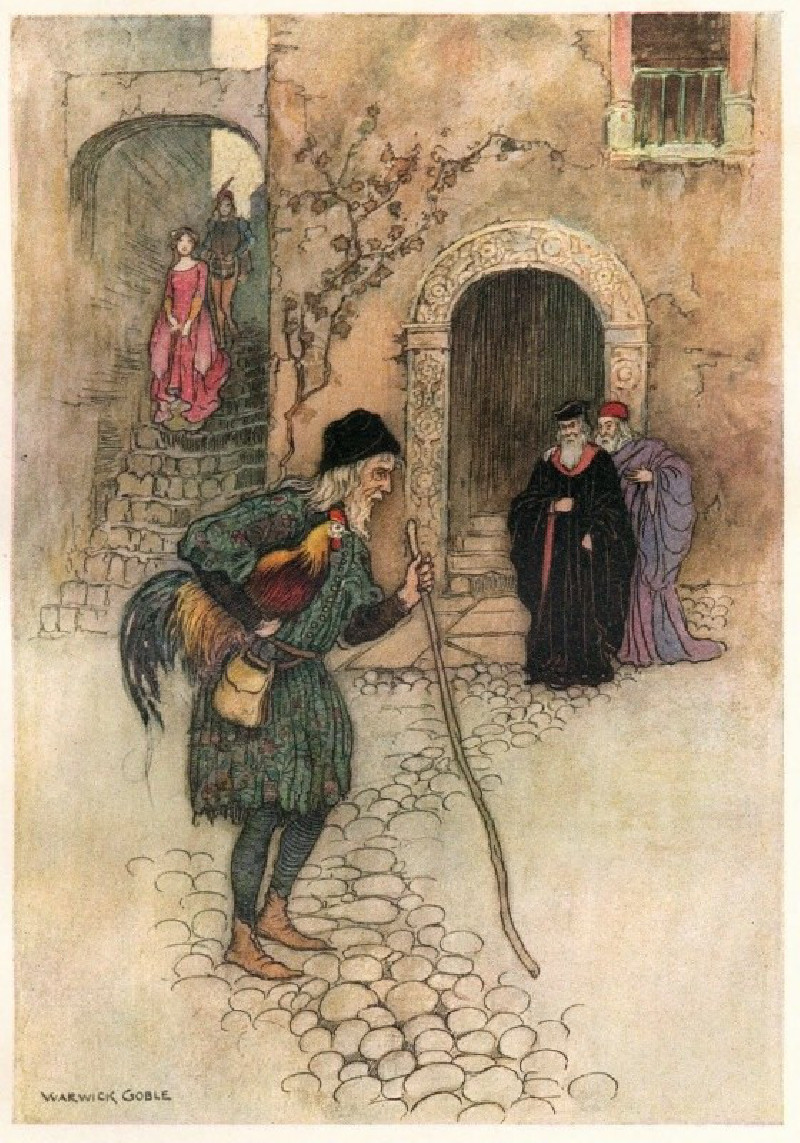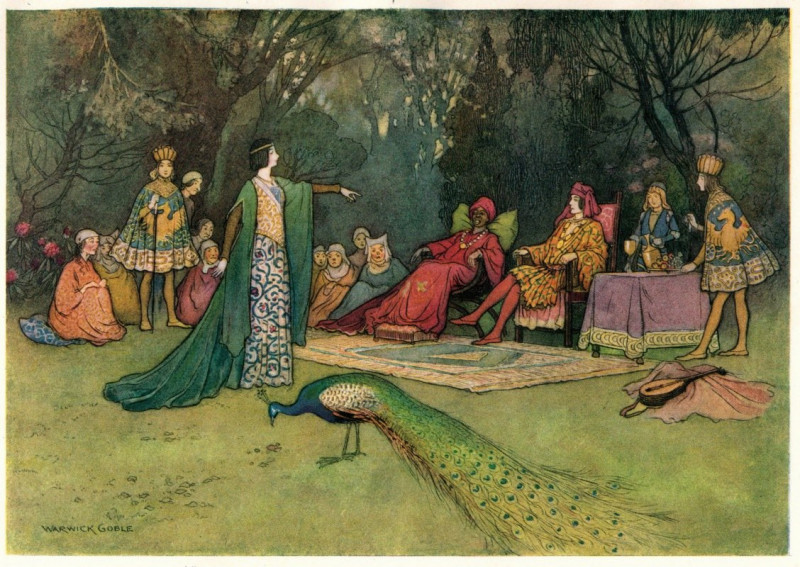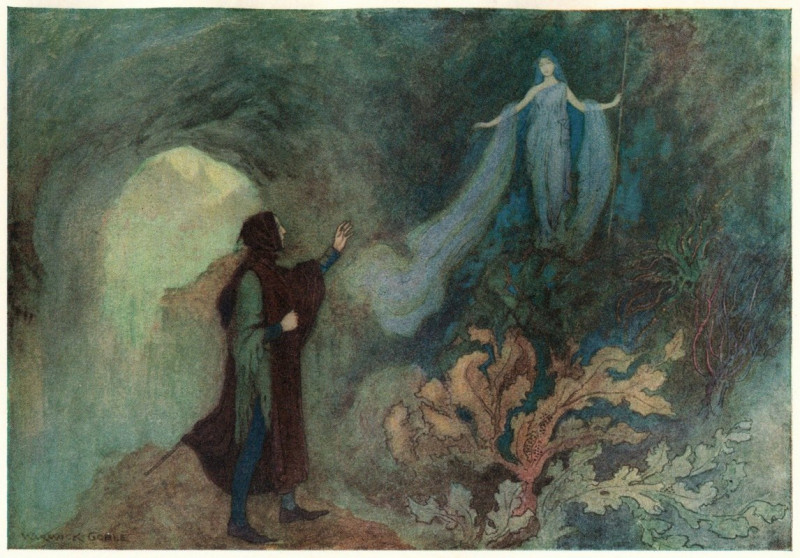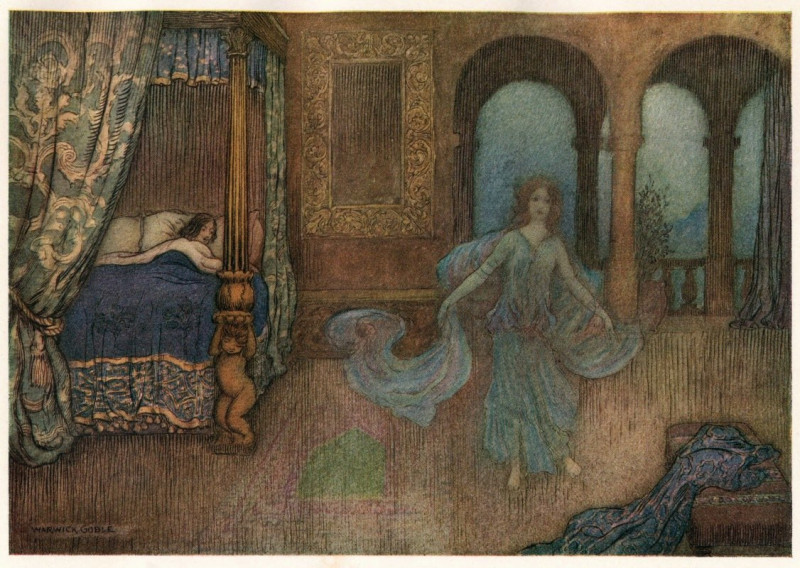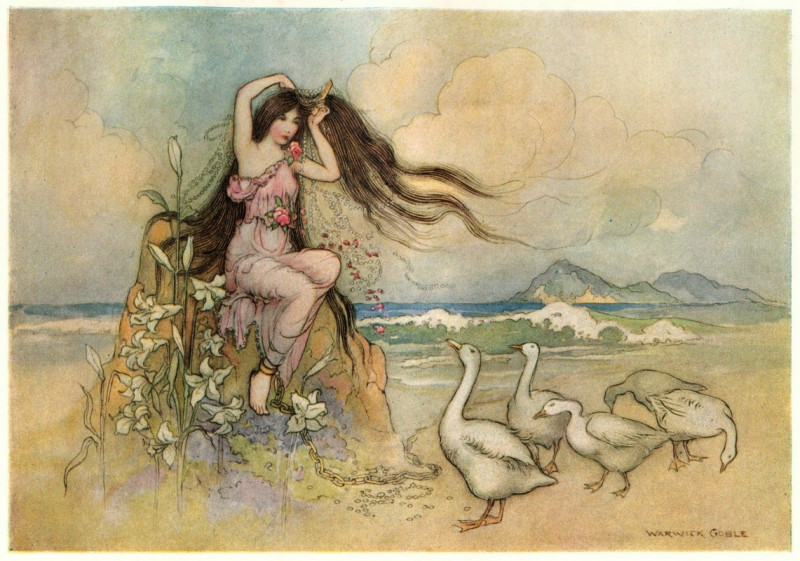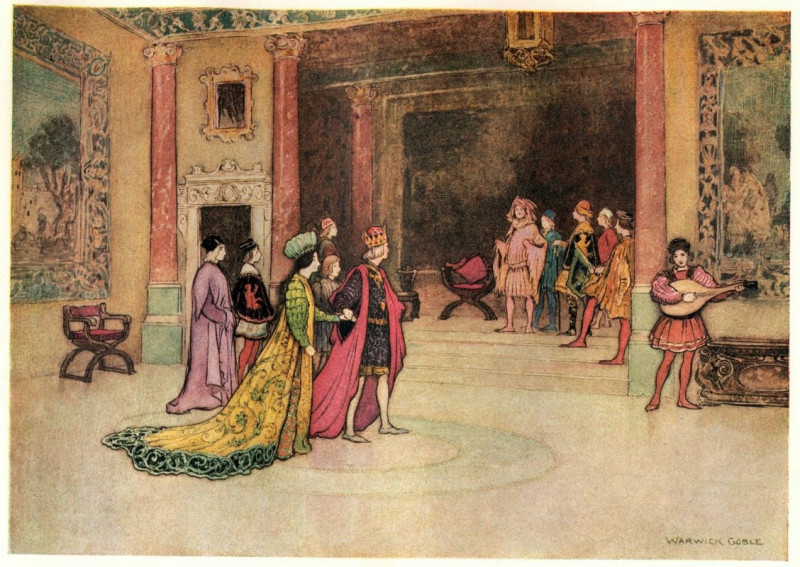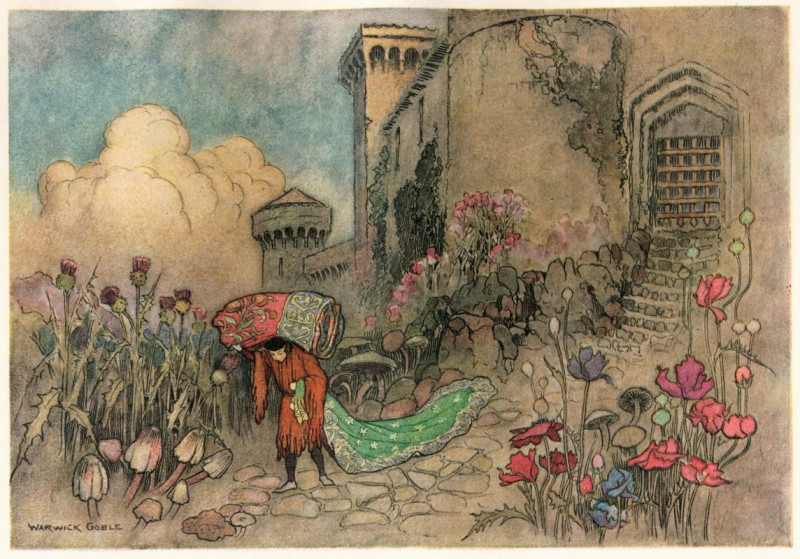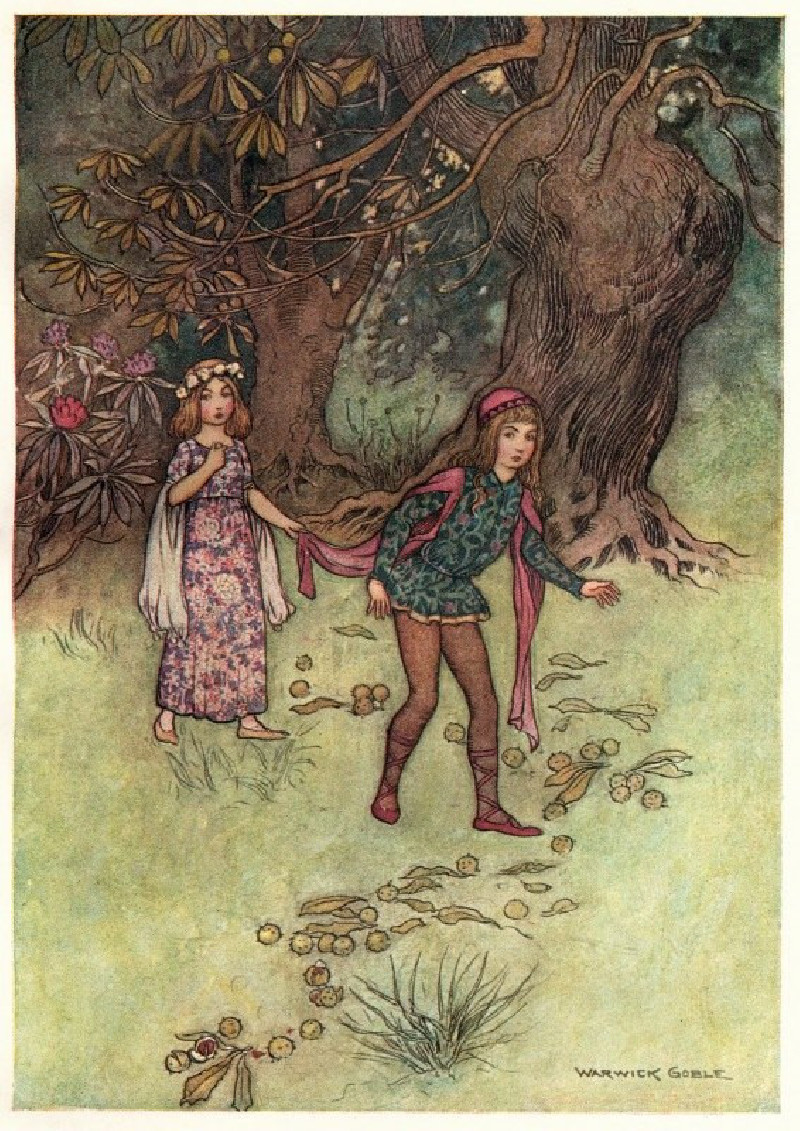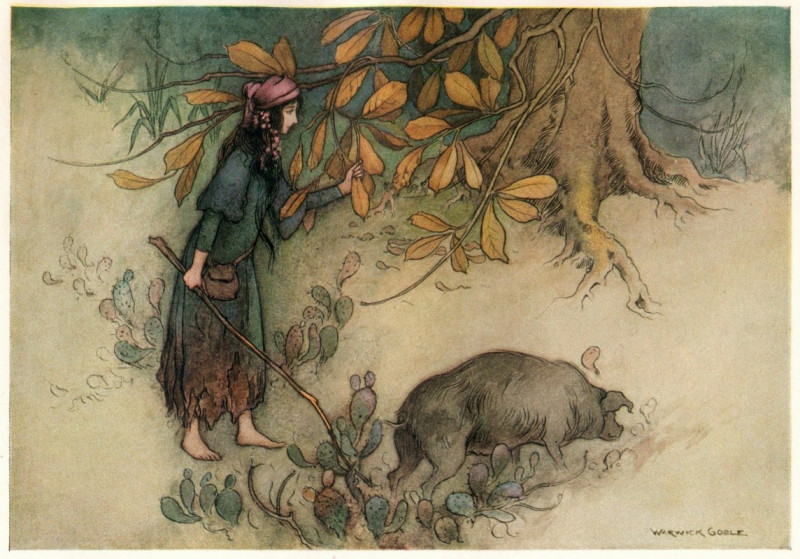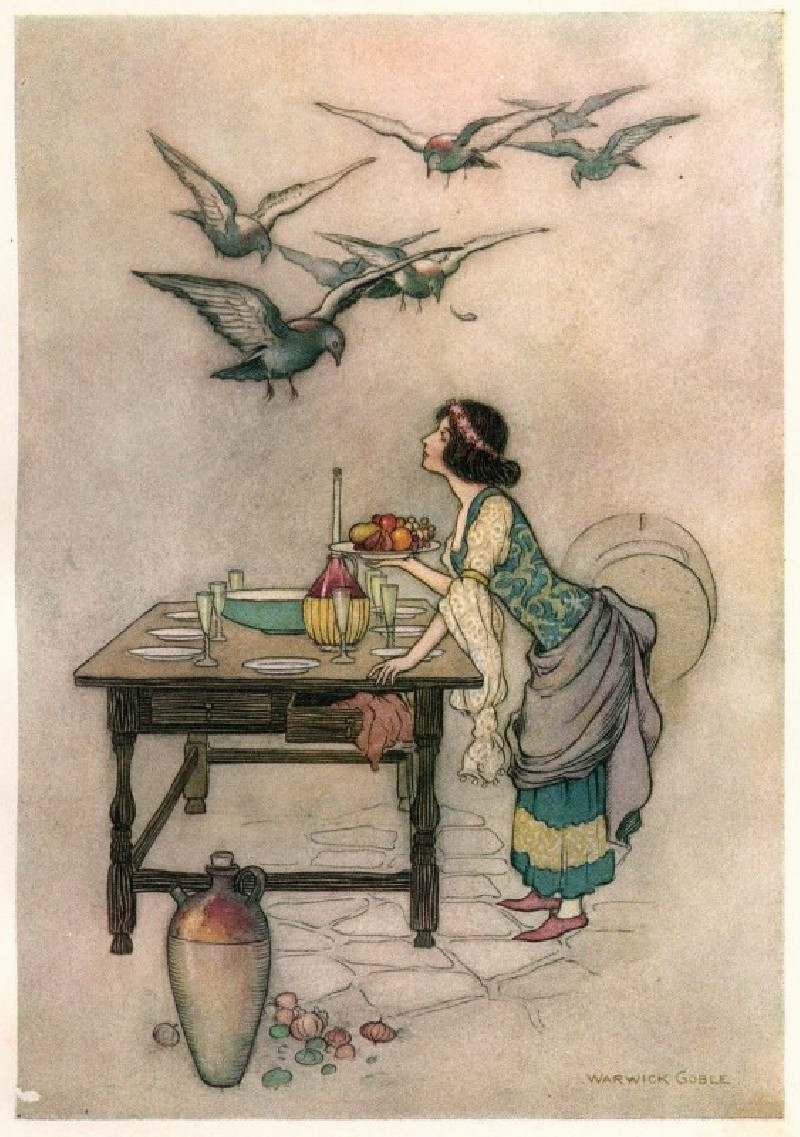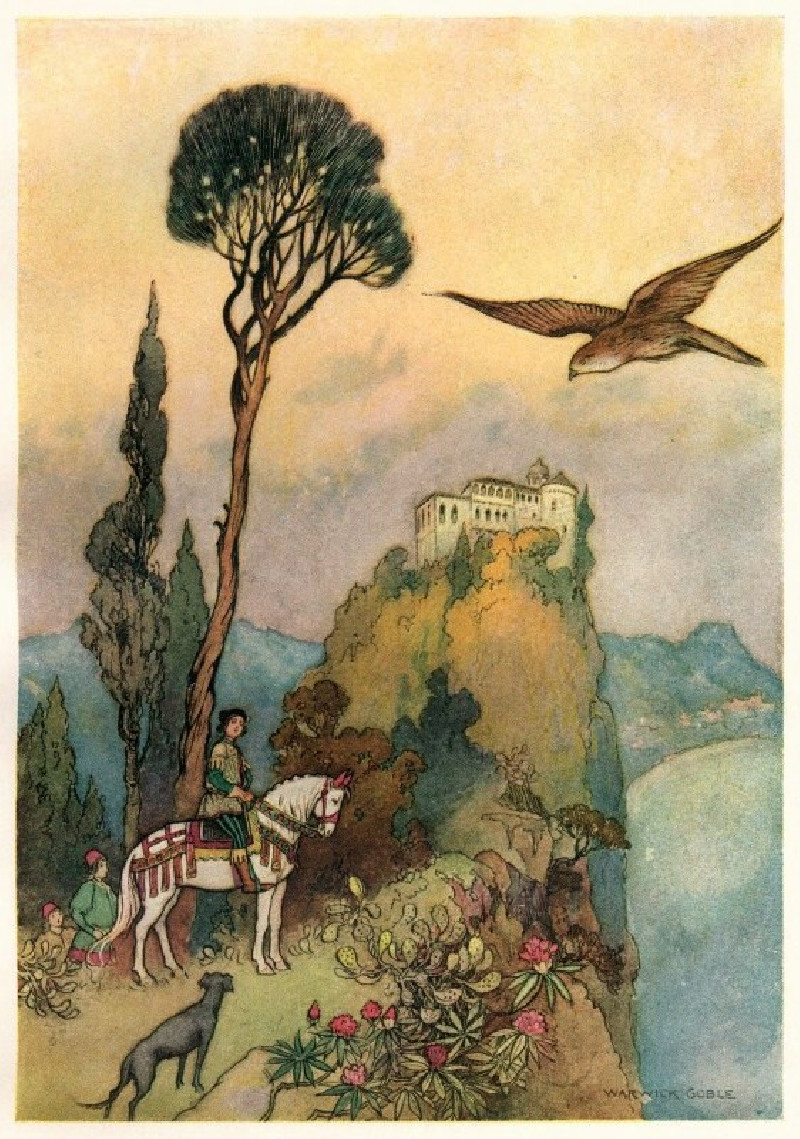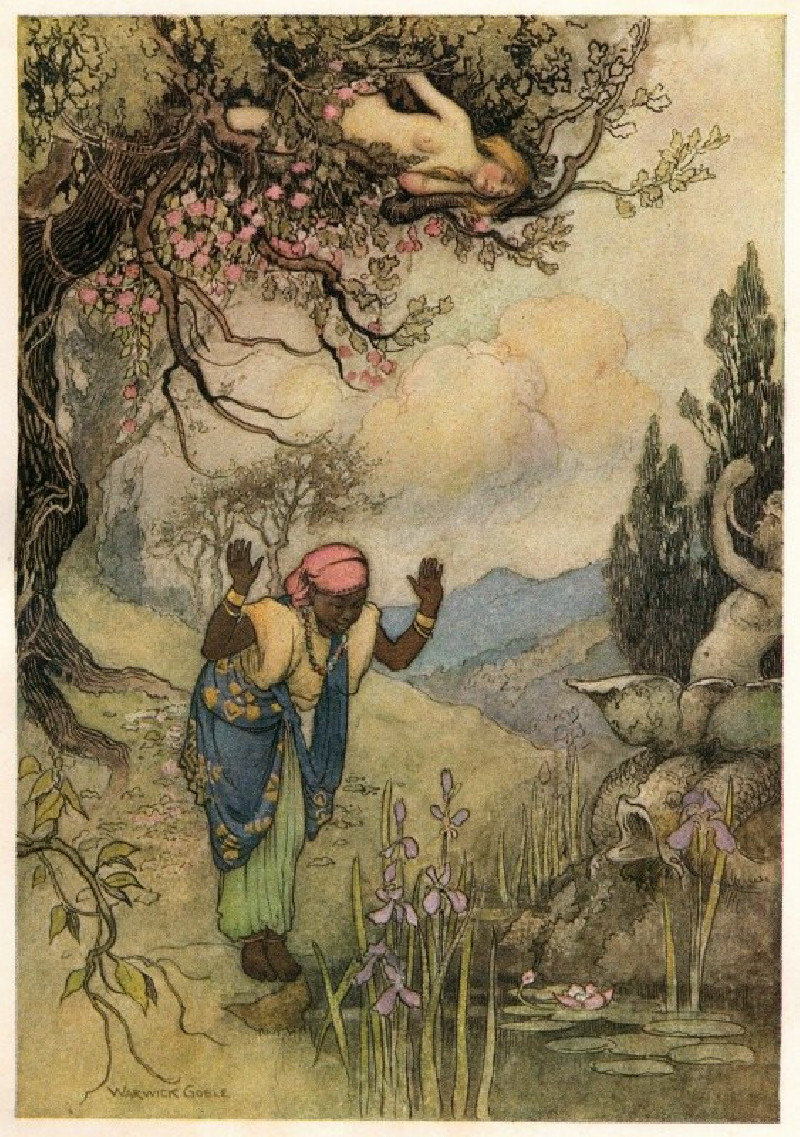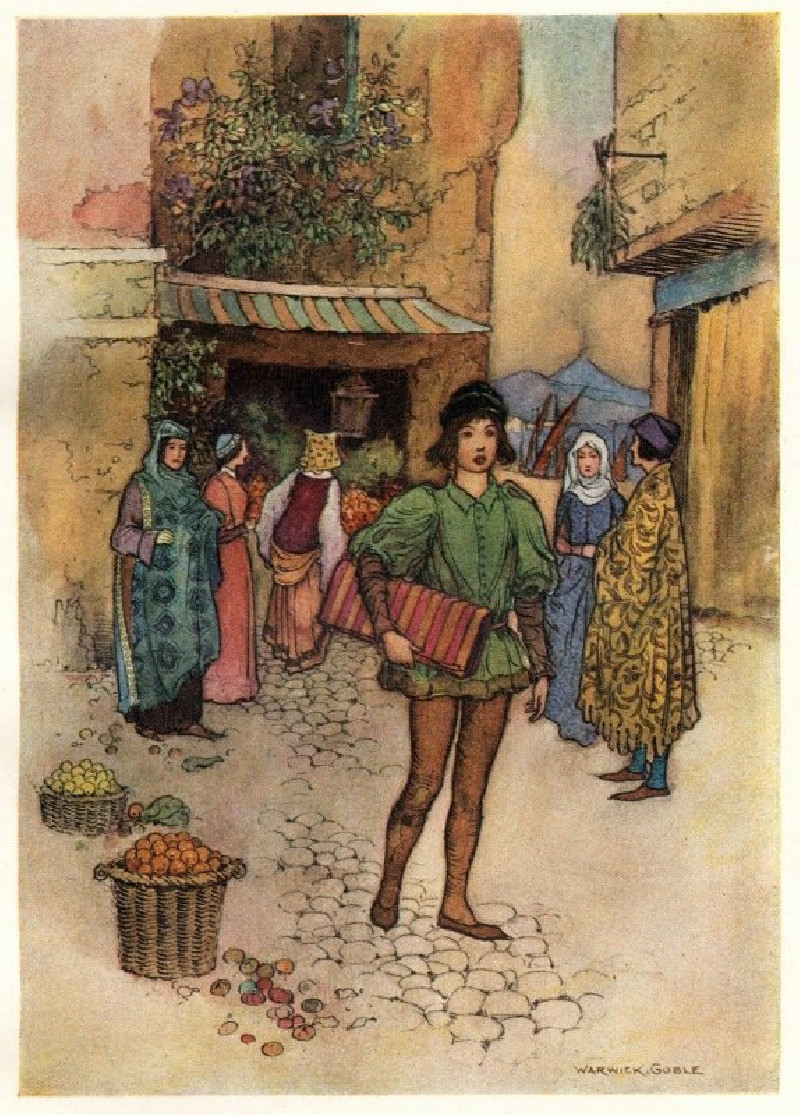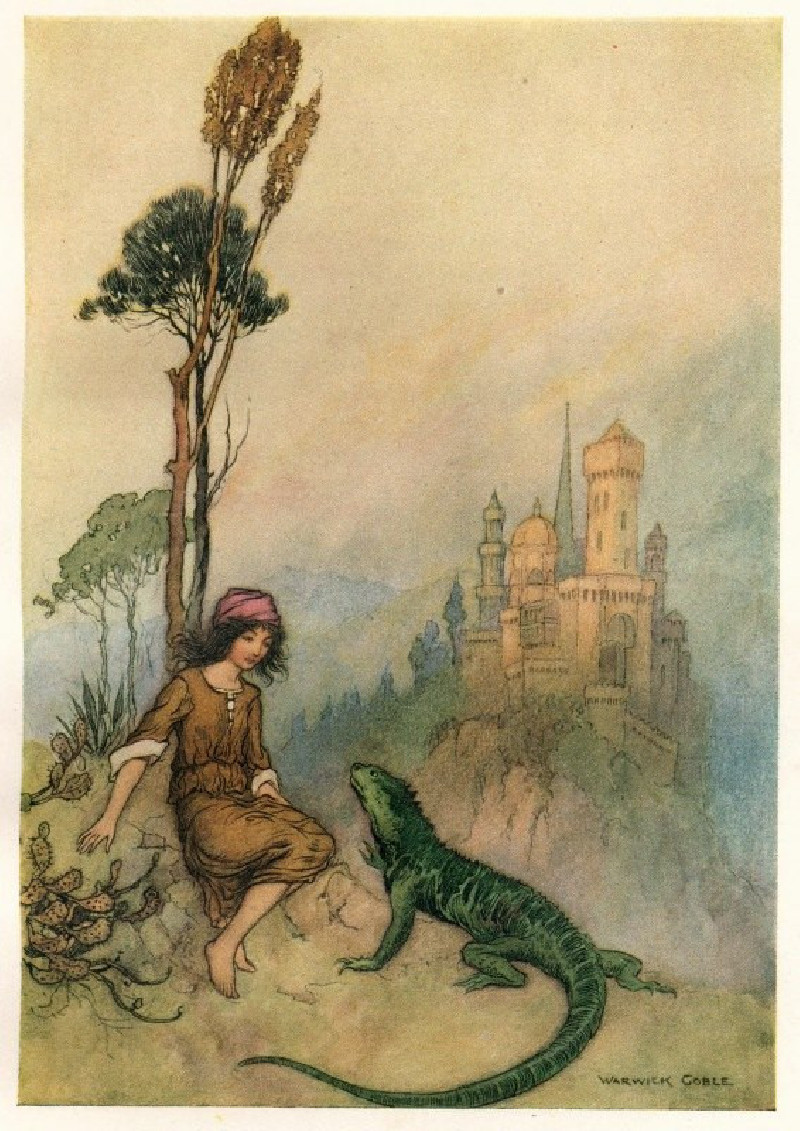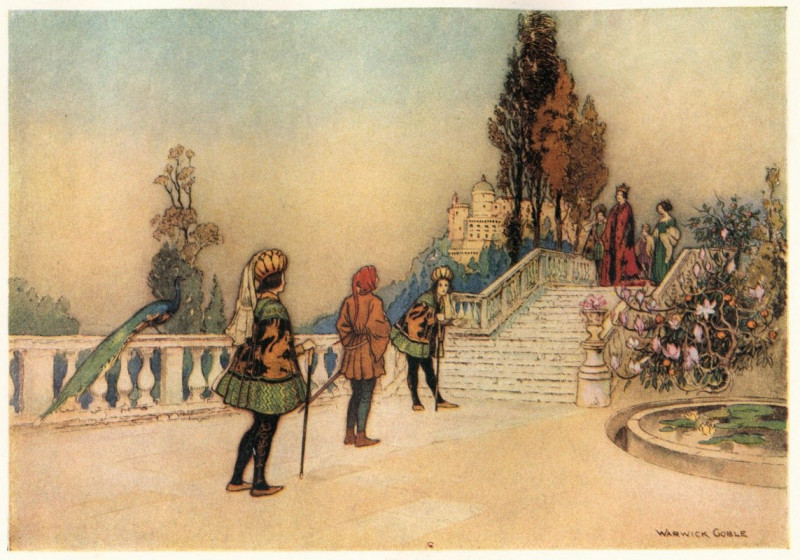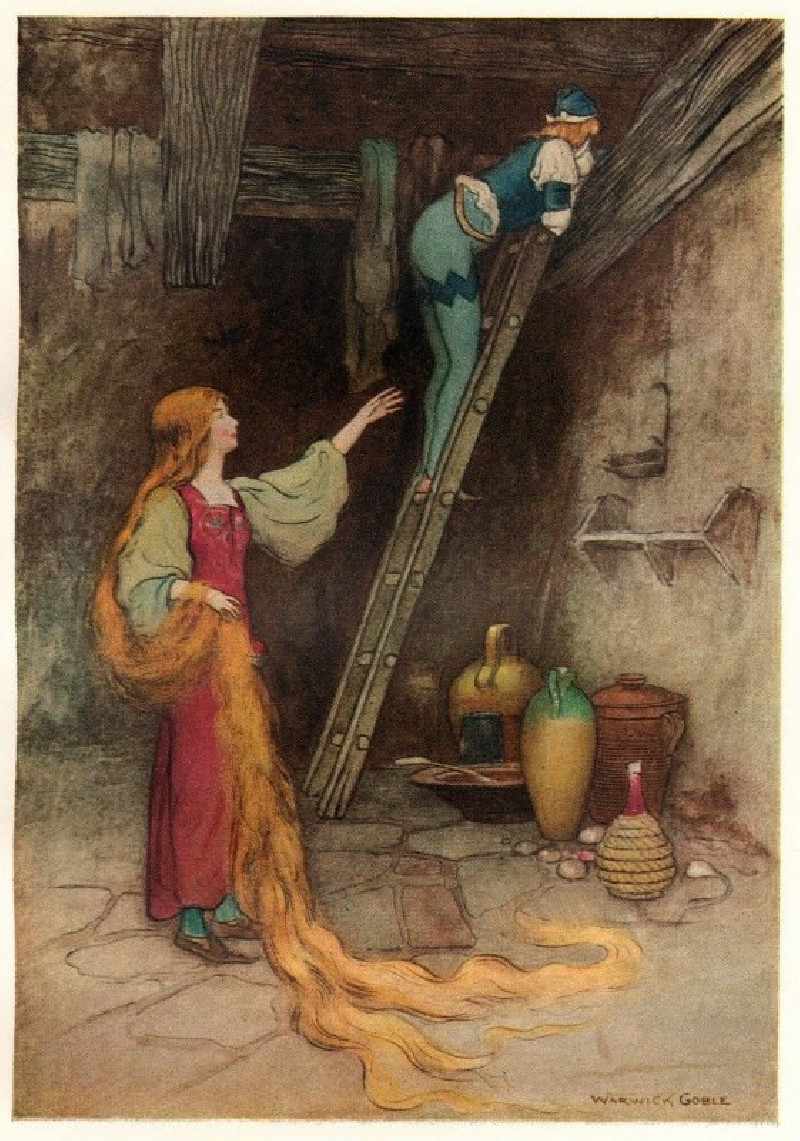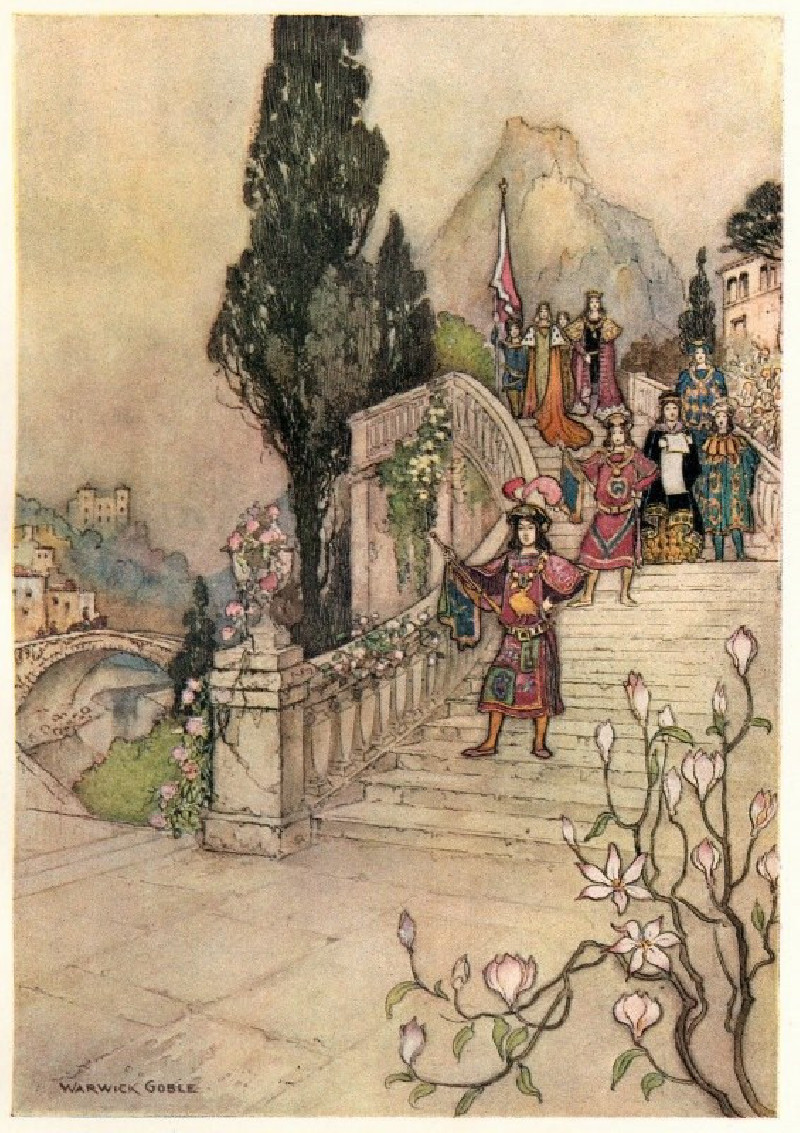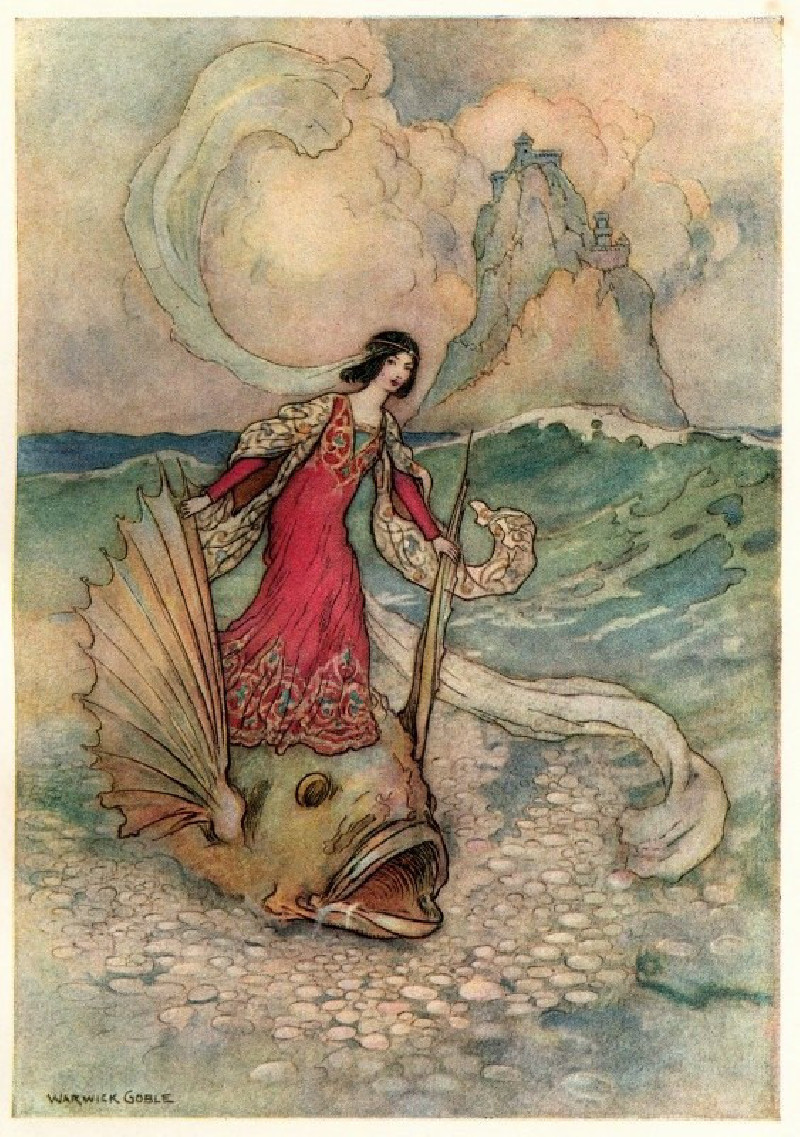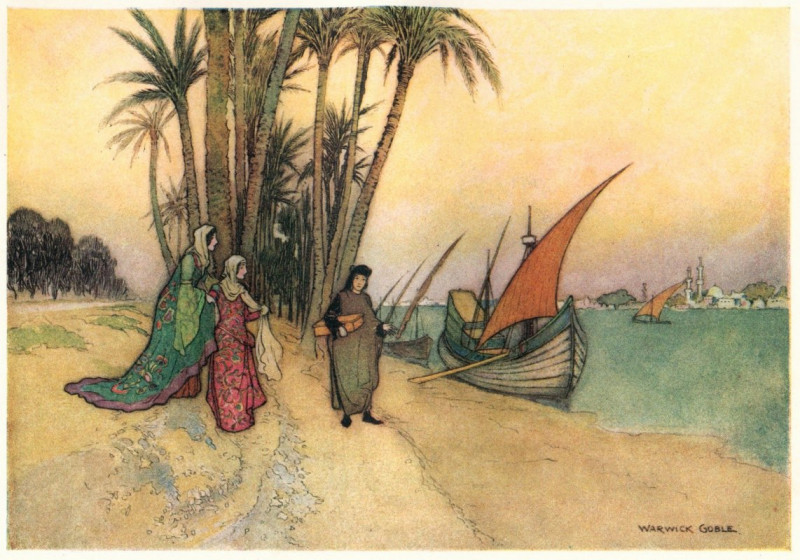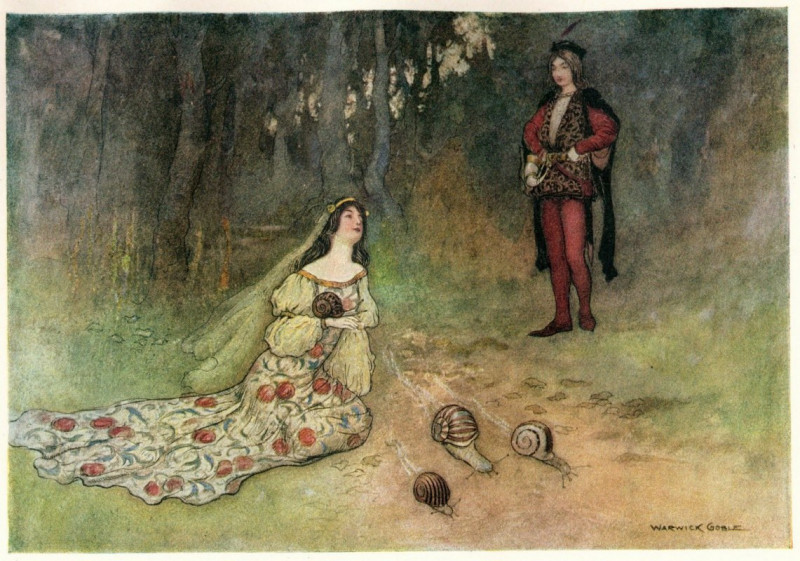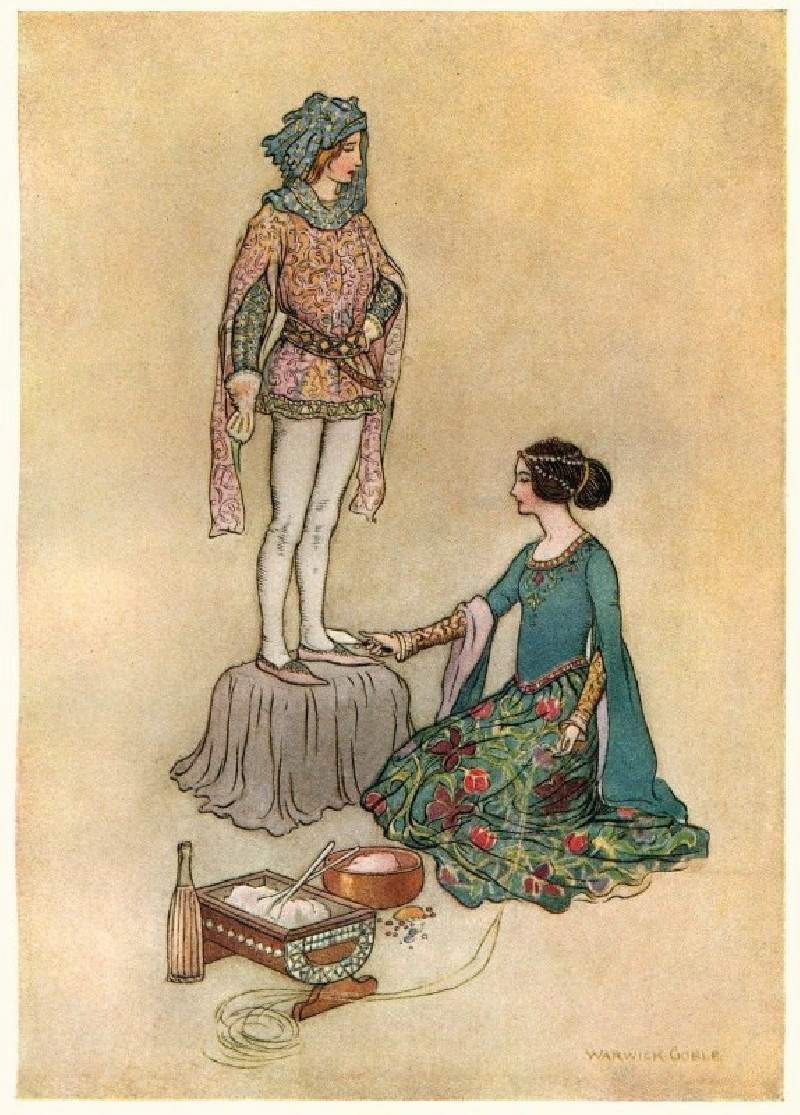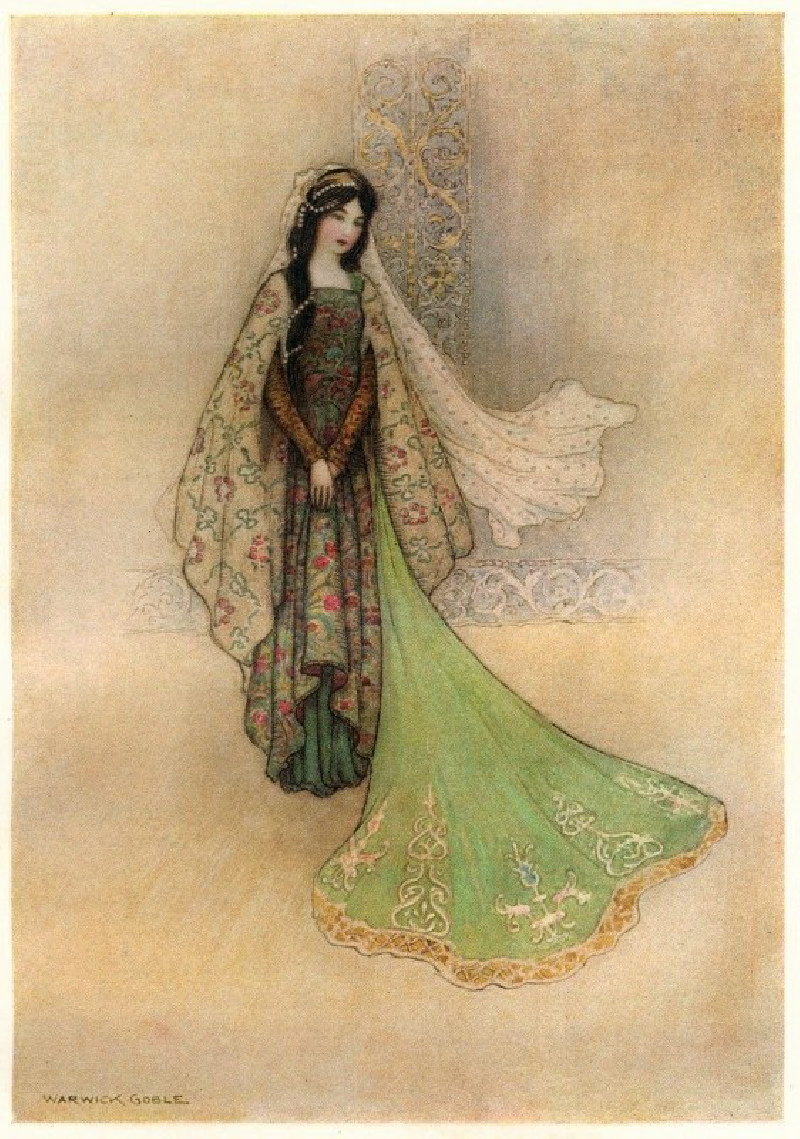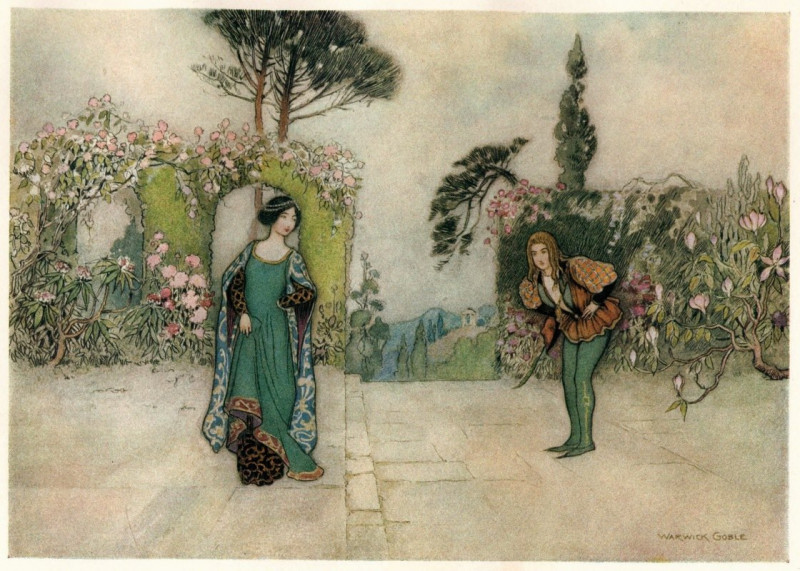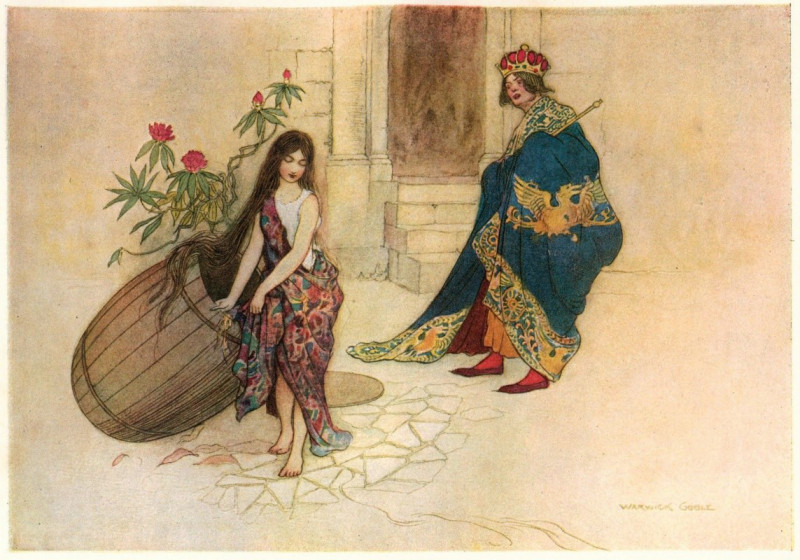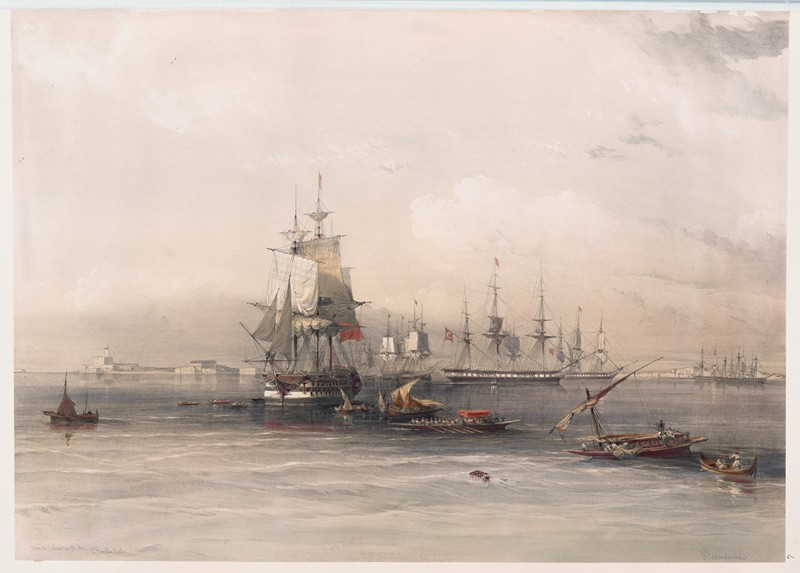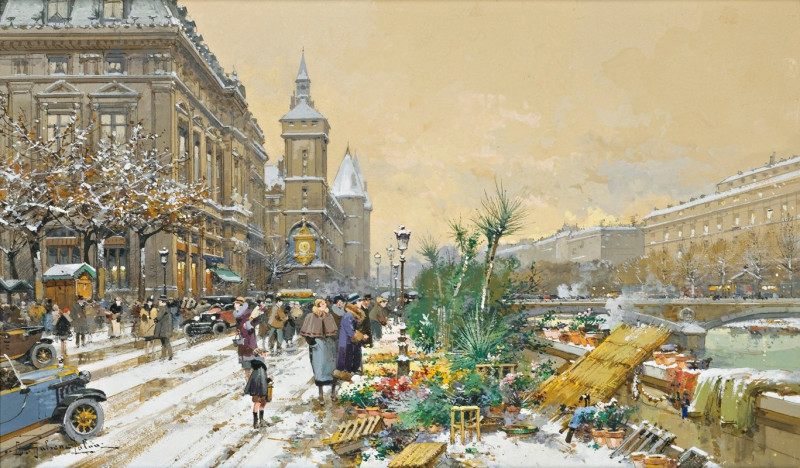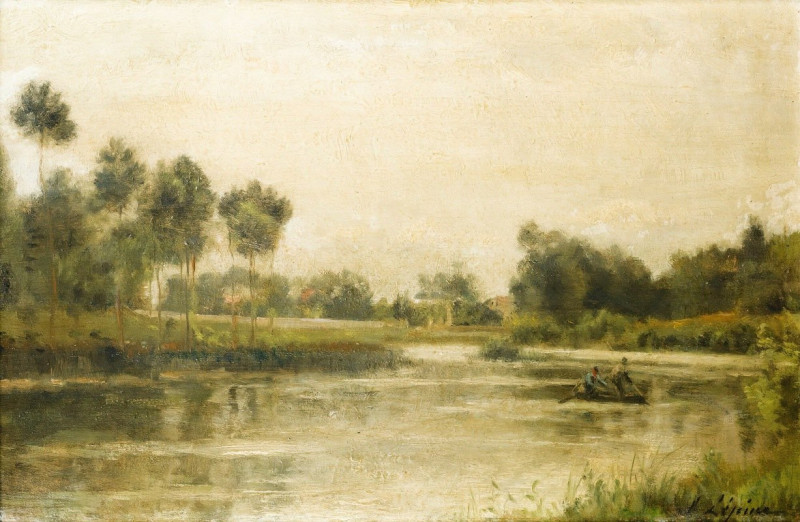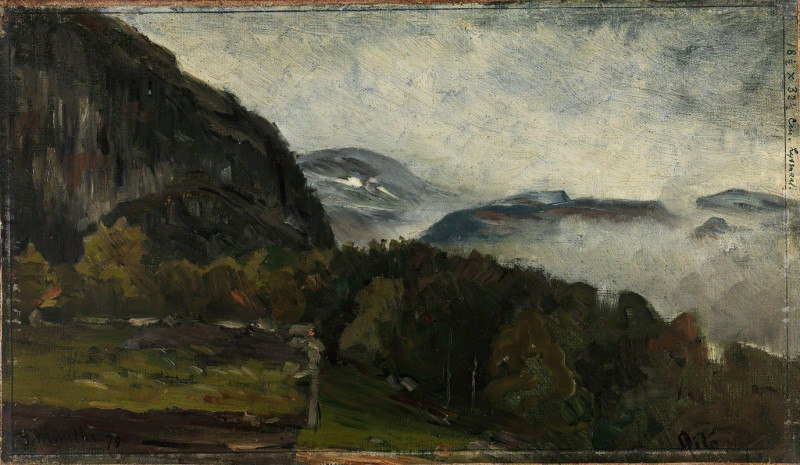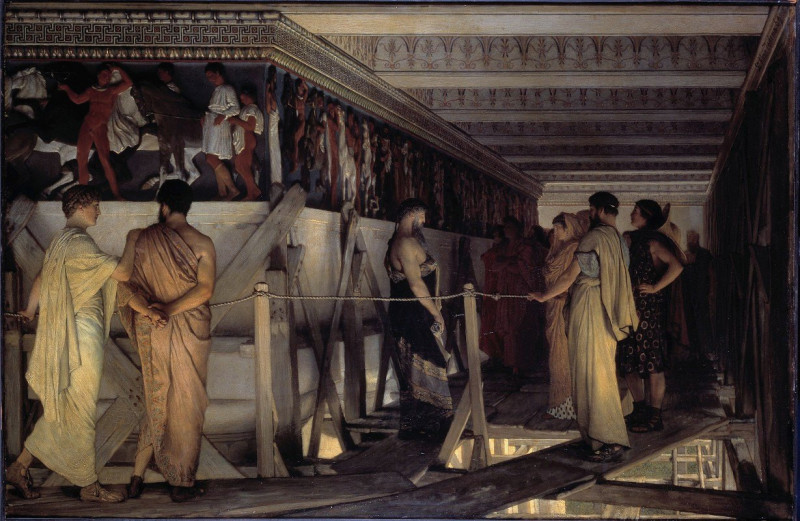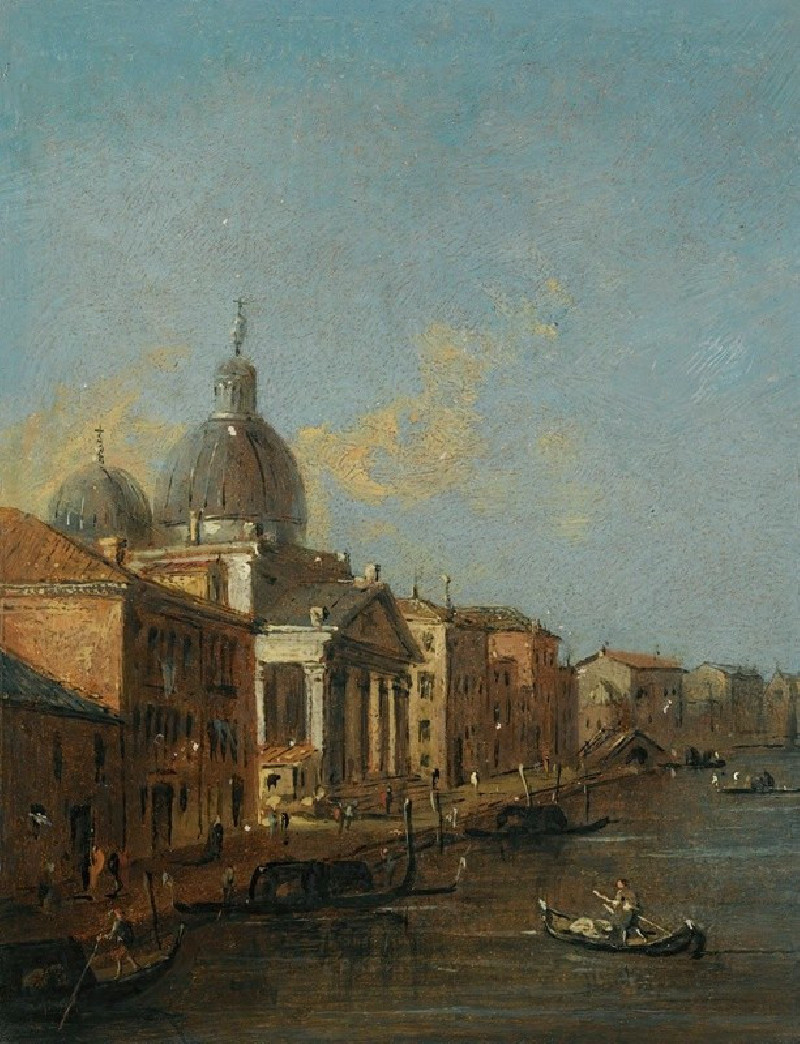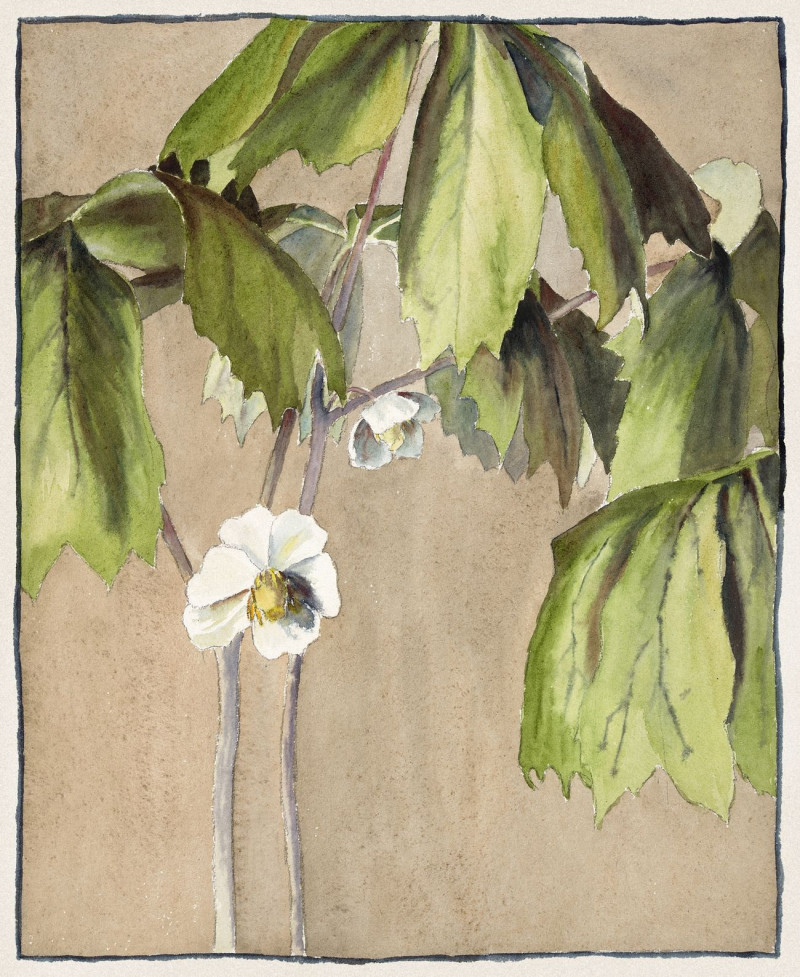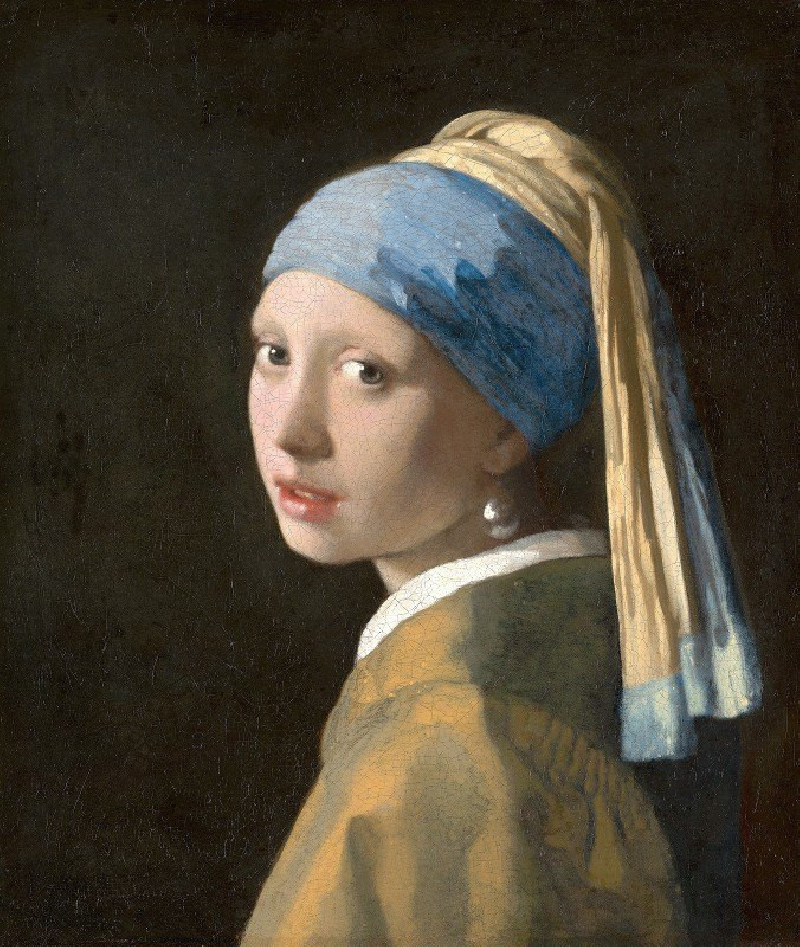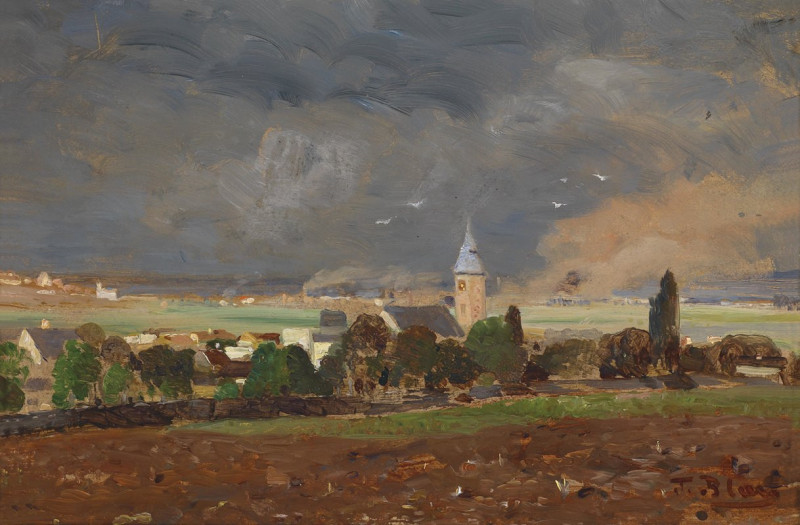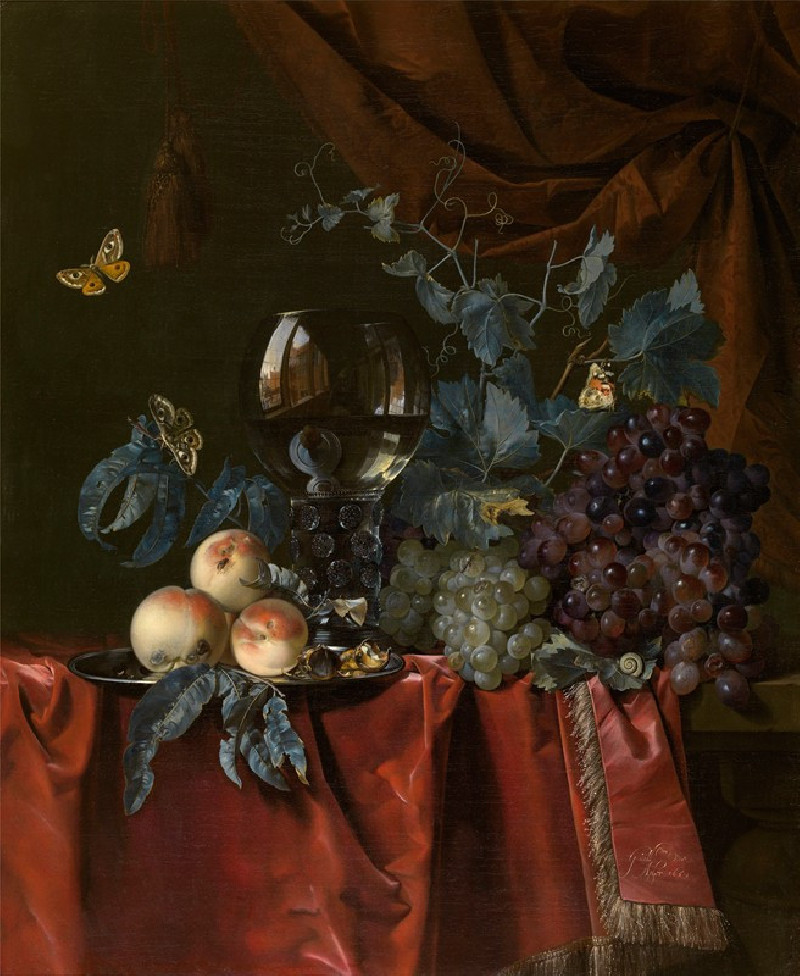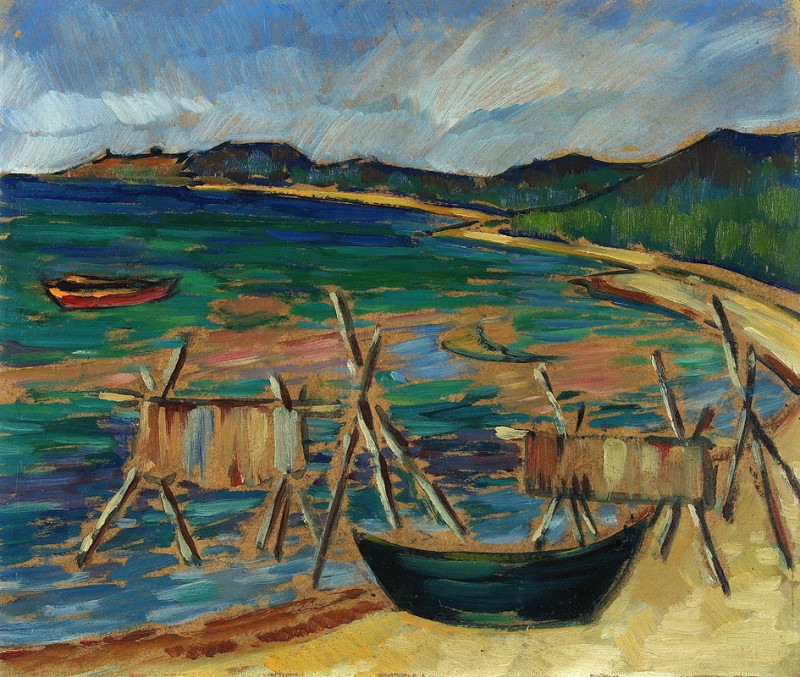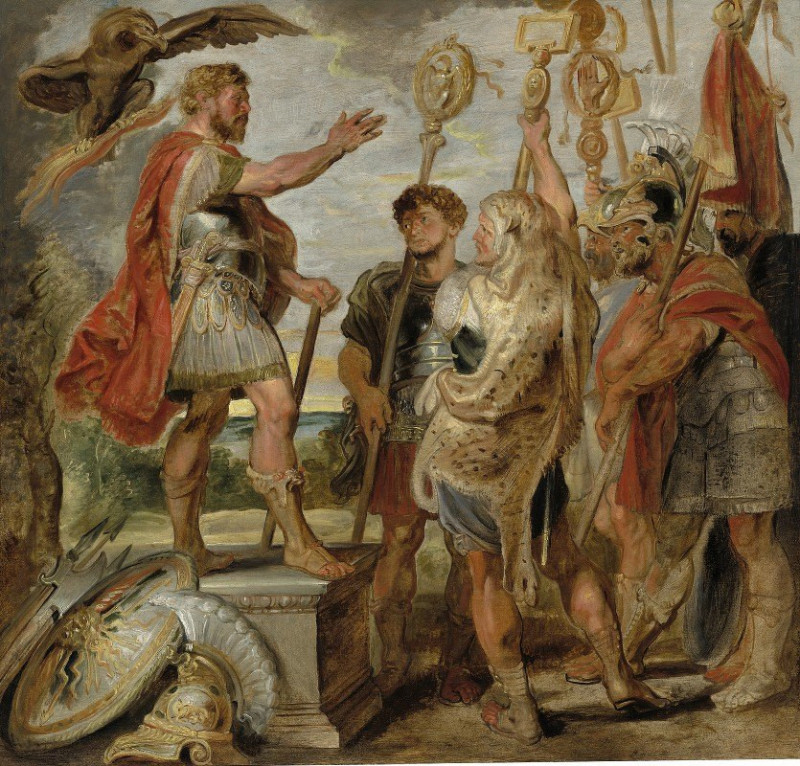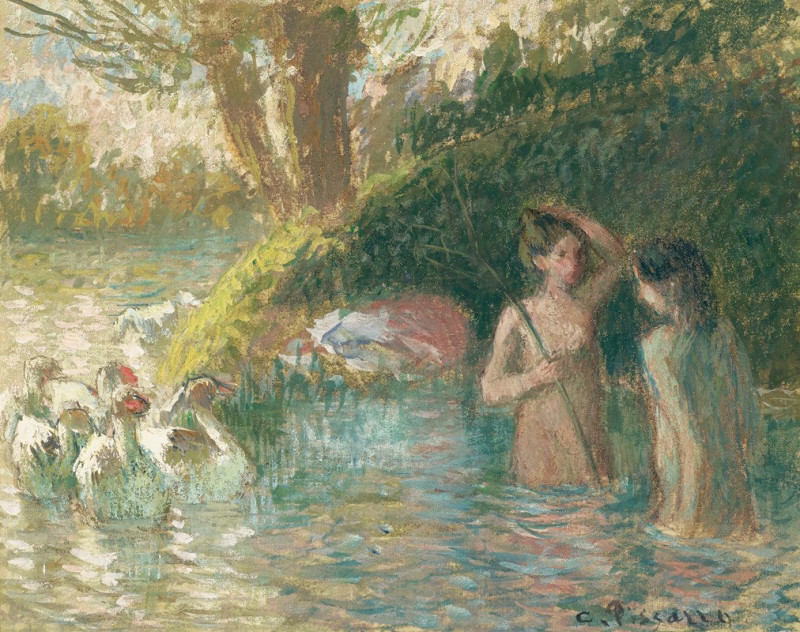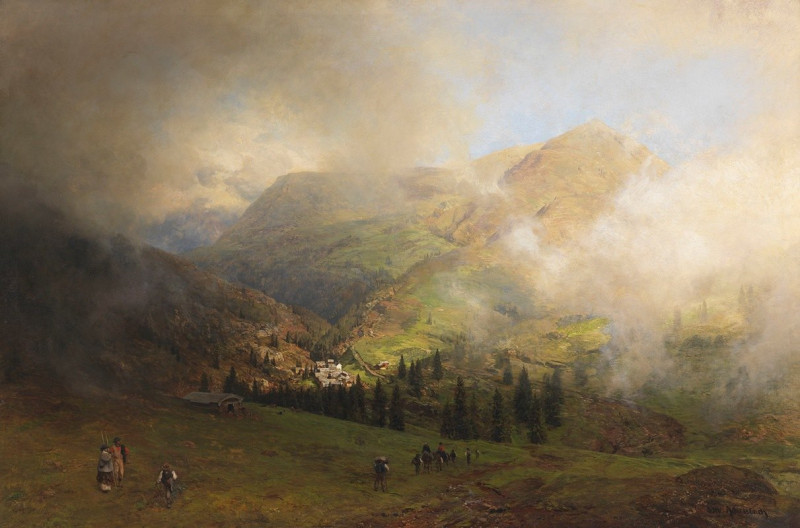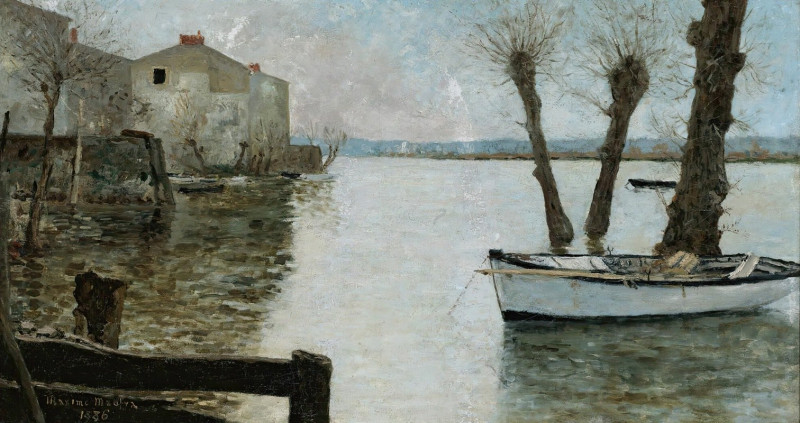Fenicia and the Two Brothers (1911)
Technique: Giclée quality print
Recommended by our customers
More about this artwork
Welcome to a visual enchantment through Warwick Goble’s ethereal artwork, "Fenicia and the Two Brothers" (1911). This colorful watercolor illustrates a serene encounter within a classical garden setting that appears both inviting and mysterious. At the forefront, Fenicia, robed in a magnificent blue gown adorned with floral patterns, elegantly walks down a stone pathway, her attention directed towards something unseen. This poised and graceful figure is contrasted by the vibrant presence of two young men dressed in medieval-inspired garments, engaged in conversation. The backdrop is an evocative landscape with a distant fountain and blooming tulips bordering the terrace.Echoing the romantic and narrative richness often found in Goble's illustrations, this painting invites viewers into a moment suspended in time, where emotions and stories intertwine under the shadow of expansive pine trees. Delicate and detailed, the composition of this scene enhances the mysterious and yet tranquil ambiance of the painted encounter.
Delivery
Returns
Warwick Goble was an illustrator of children's books. He specialized in Japanese and Indian subjects.
Goble was born in Dalston, north London, to a merchant family, and was educated at the City of London School and the Westminster School of Art. He worked at a printer specializing in chromolithography and contributed to The Pall Mall Gazette and The Westminster Gazette.

